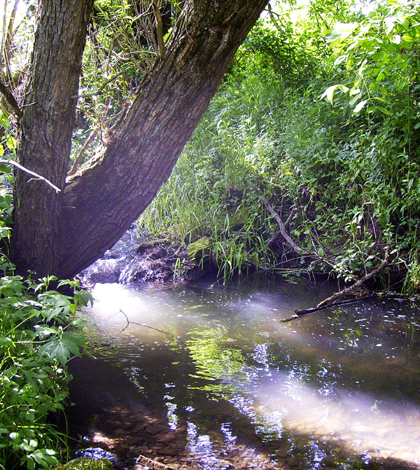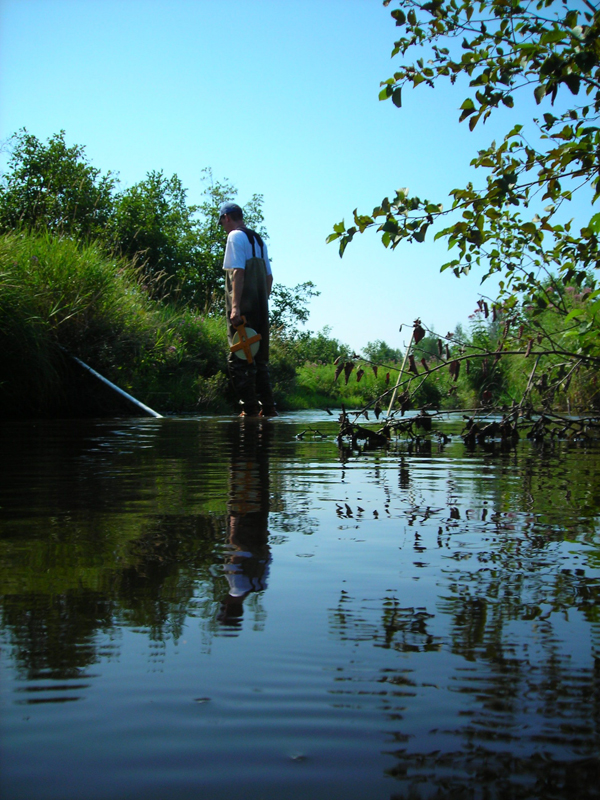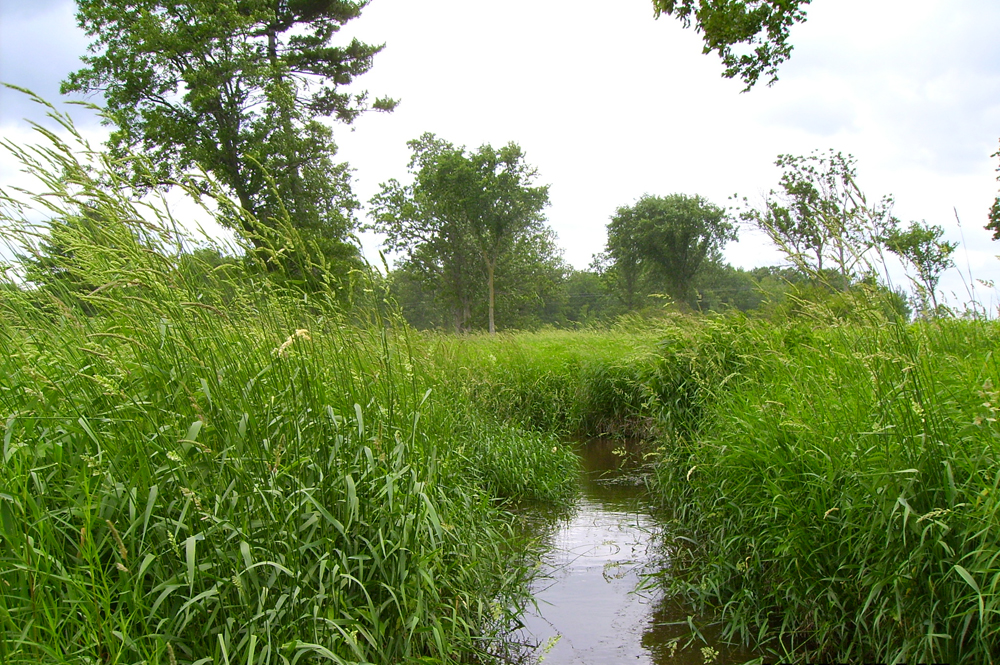Wisconsin trout stream temperature study shows benefits of shade trees

When settlers in Central Wisconsin cleared the land of hardwood forests, the loss of shade warmed the some of region’s stream temperatures beyond what cold-loving species like brook trout could take. Recently published results of a data collection and modeling effort there shows managers how much stream habitat would still be suitable for trout if trees still lined the banks.
The link between shade from streamside trees and water temperatures is well established, said Ben Cross, study author and doctoral student in Washington State University’s School of the Environment. So is the link between stream temperatures and brook trout distribution.
Cross and his colleagues wanted to take the link a step farther and calculate just how much trees helped cool streams. They also sought to model how temperatures in Central Wisconsin streams would respond to hypothetical attempts to increase shade.
“We were looking at trying to really quantify that in numbers for management, and then give it some practicality by applying these models,” said Cross, who conducted the research while a student at the University of Wisconsin – Stevens Point. “If you were to shade at these levels, what would happen to these stream temperatures?”
The researchers worked in 12 streams that supported brook trout reproduction in their upper reaches but not in the lower reaches. They instrumented each stream with a series of data loggers that measured water temperatures every 30 minutes from the beginning of June to the end of August. They focused on the summer months to make sure to capture each stream segment’s maximum weekly and daily average temperatures, which give an indication of whether a segment was suitable for brook trout.
Streams with a maximum weekly average temperature of 22.3 degrees Celsius or higher are thought to be too warm for the species, Cross said. The limit for maximum daily average temperature is 25 degrees.

Benjamin Cross gets ready to set up a ready to set up a cross-sectional transect (Credit: Preston Debele)
The researchers also collected morphological data at several points, including channel width and depth, bank angles and shade from vegetation. They also classified the vegetation as either grass, shrubs, trees or transitional.
Though fieldwork in Central Wisconsin is a relatively safe endeavor, some study streams ran through pastures populated with uncooperative cows.
“You’d have to shoo away some cows out of the stream. As you were shooing them away, the cow would leave you a nice present in the stream to float down along your waders,” Cross said. “Those are the more harrowing moments. You definitely throw the waders away after one season.”
Once the data were in and analyzed, the researchers consistently found that, on average, stream temperatures in segments with grass-lined banks warmed 1.19 degrees Celsius per kilometer. Temperatures actually decreased in segments shaded by trees. The cooling effect was likely the result of groundwater seeping into the stream, but the shade from trees helped the temperature stay down.
The study also modeled how stream temperatures might change under different amounts of shade from trees. The model predicted that more shade from trees could cool water temperatures and increase brook trout habitat on as many of five of the study streams. The shade would keep those streams from warming past the 22.3-degree threshold that makes a stream unsuitable for the fish.

The study found stream temperatures were likely to increase along grass-lined segments (Credit: Ben Cross)
The study shows that managing riparian vegetation for more tree cover is an important tool for agencies targeting stream temperatures to protect brook trout habitat, Cross said. Especially when managers are concerned that higher air temperatures brought on by climate change could disrupt coldwater habitats.
“This could be a really important piece in some of those streams that are fine right now but may become unsuitable with these warmer air temperatures,” Cross said. “It’s something I would like to conserve and maintain. Especially these populations on the fringe.”
The research is published online by the North American Journal of Fisheries Management.
Top image: A Wisconsin trout stream shaded by a riparian tree is more likely to stay cool (Credit: Ben Cross)





0 comments